Faster gaming, scene-by-scene HDR, and the official birth of 8K
What is HDMI 2.1? The new standard for HDMI connectors was confirmed back in November 2017, but has yet to trickle down into mass-market television hardware. When it does though, it will mark a big step for both the AV industry and the home viewers wanting to get the most of their TV series, films, broadcasts, and gaming consoles.
When High Definition Multimedia Interface (or HDMI) first arrived on the scene, everyone rejoiced at no longer having to use bulky SCART connectors, or those confusing component video cables, ever again.
Instead HDMI offered high definition video with a connector that was just a little bigger than a standard USB plug.
Over the years the HDMI standard has seen continuous improvement, with extra features being added as the needs of televisions have changed.
HDMI 2.1 is the next step in that process.
The headline feature here is support for 8K content at 60fps, but there are also a number of minor features that add up to a much more capable standard such as support for Variable Refresh Rates, Dynamic HDR, and Quick Media Switching, which should make it faster than ever to change between the devices attached to your television.
Here's a rundown of everything that's due to arrive with the new standard.
Higher resolutions and refresh rates
The new HDMI 2.1 cables will allow faster refresh rates, including 8K resolution video at 60 frames per second and 4K at 120 frames per second – and it's that second feature that will be the real selling point for gamers and home cinema geeks, at least at first.
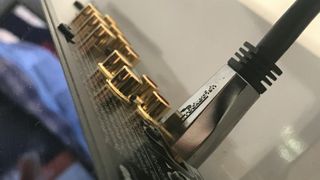
HDMI 2.1 'lays the pipe' for the TV and VR industries
"We've increased resolutions and frame rates significantly," Jeff Park, Director of Marketing at HDMI Licensing, told TechRadar at CES 2017, adding that the Tokyo 2020 Olympic Games are going to be a driver for 8K TV content.
"NHK [Japan's national public broadcaster] is going to push 8K120 as an actual broadcast stream, and many consumer electronics manufacturers want to hit that target, so we're laying the pipe to give the industry flexibility. It's practical stuff."
Although it's about keeping HDMI at the bleeding edge, HDMI 2.1 actually goes ever further, supporting resolutions as high as 10K at 120Hz.
Do I need 8K?
You may be sceptical of whether you even need 8K capable hardware and connectors. And maybe you don't: most content you'll be watching on your TV will be in SDR or HD, and the industry is still adjusting to the flurry of 4K capable sets released to market. Isn't this all preemptive?
Even if 8K TV isn't on your radar, though, HDMI is looking ahead to its uses in VR, says Park:
"8K content will have to follow, but it's not all about linear content these days – it's about VR," he told us. "VR is targeting very high resolution and very high frame rates, and one of the targets the industry is talking about for VR applications is 8K at 240Hz."
That's actually not in the HDMI 2.1 spec, but it's achievable in the next spec, said Park, who thinks it's even possible that some broadcasters could even skip 4K transmissions entirely and gun straight for 8K. You have been warned.
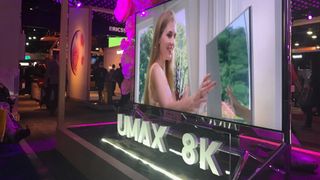
8K TVs are coming, but HDMI 2.1 is also focused on VR
Game Mode VRR
HDMI 2.1's Game Mode VRR feature is about anything involving real-time interaction. The VRR stands for Variable Refresh Rate, which means less image lag, stutter and frame tearing similar to the effect achieved by FreeSync and G-Sync on the PC platform.
This is great news for gamers, because HDMI 2.1 will enable a 3D graphics processor to render and display images in real time, which will result in more fluid gameplay and greater detail.
Once again, this will find its biggest use in the world of VR. "VRR means no lag and a more immersive experience that you need for gaming, whether it's traditional gaming or a cinematic 'on the rails' VR experience," says Park. "An increase in the fidelity is needed to make VR truly immersive."
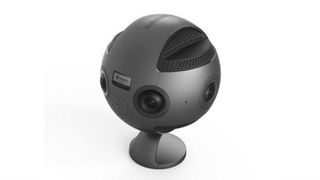
360° 8K capture devices like Insta360 Pro are becoming more common
While it's no endgame, HDMI 2.1 will bring convincing VR experiences closer. "But it will have an immediate impact on all gaming applications," adds Park. "Whether it's 480p gaming or 8K, it doesn't matter – you'll get that immediate feedback and interaction with HDMI 2.1."
Another features that will bring big benefits for gamers is Quick Frame Transport (QFT), which promises to reduce latency – great news for fast-paced games or online multiplayer.
What is Dynamic HDR?
Given the growing popularity of HDR, HDMI 2.1 bringing Dynamic HDR is perhaps the biggest news for home cinema aficionados. Essentially it means that the very finest values for depth, detail, brightness, contrast and wider colour gamuts can be sent to your TV on a much more nuanced basis.
"Today, HDR is done by taking average values for HDR across an entire movie, so while you still get some benefit, it doesn't apply to each scene perfectly," says Park. "Dynamic HDR enables the HDR metadata to be applied as precisely as frame by frame, or more practically, scene by scene."
Frame by frame HDR would be massively time-consuming to produce, but scene by scene is feasible. Either way, HDR is about to be given a whole lot more impact.
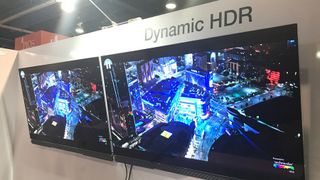
HDMI 2.1 will bring scene-by-scene HDR
What is eARC?
It's not all about TVs, either; soundbars, AV amplifiers and other audio equipment will also benefit from HDMI 2.1 – though it will mean upgrading all of your equipment.
For the last few generations, HDMI cables have had an Audio Return Channel(ARC), which means audio can be sent both ways between a TV and audio gear. This essentially enables a display to send its own audio – perhaps from a built-in Netflix app – to a soundbar or surround sound system, bypassing its own speakers.
AV amplifiers and other audio equipment will also benefit from HDMI 2.1 – although it will mean upgrading all of your equipment.
Enhanced Audio Return Channel (eARC) is nothing more than a simple update to keep pace with changes in audio codecs, specifically to include the new object-based audio codecs, Dolby Atmos and DTS:X.
"eARC ups the bandwidth significantly,” says Park. “Previously you were limited to two-channel PCM or legacy Dolby Digital or DTS audio, but with eARC that reverse channel can now support much higher bandwidth audio including Dolby True HD, DTS HD, Dolby Atmos, DTS:X and other object-based audio at much higher bandwidths."
What is a 48G cable?
This is about defining a new specification of a HDMI cable's speed, with so-called 48G cables (for now just a working title) offering 48Gbps bandwidth for sending uncompressed 8K video, with HDR, over a HDMI 2.1 cable.
So why do we need a 48G-rated cable? "Because we're carrying so much data now – we've gone from 18Gbps in HDMI 2.0 to 48Gbps in HDMI 2.1," says Park. "Today we have 'standard speed' and 'high speed' HDMI cables, and 48G will be related to that."

Incoming HDMI 2.1 cables will cope with 48Gbps
Ditto the compliance tests that each HDMI 2.1 cable will have to pass in order to be labelled as such. Backwards-compatible with earlier versions of the HDMI specification, and able to be used with existing HDMI devices.
When will be see the first HDMI 2.1-ready TVs?
While the new standard was been confirmed back in November 2017, adoption is going to be slow.
The new technology didn't quite have time to be implemented in 2018 televisions (most of which plan their launches for CES 2018 in January). 2019, however, could well be a different story.
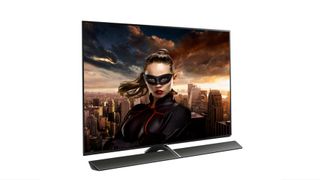
The first TVs with HDMI 2.1 are expected soon
So, does it matter if your next TV has HDMI 2.1 or not? For most of us, probably not; an 8K at 60Hz-capable television isn't going to be of much use for a while yet. But for gamers and movie-lovers, the prospect of a 4K 120Hz TV supporting scene-by-scene dynamic HDR will be tempting.
It's almost time to buy a new TV...
Source: Techradar.com







0 Comments